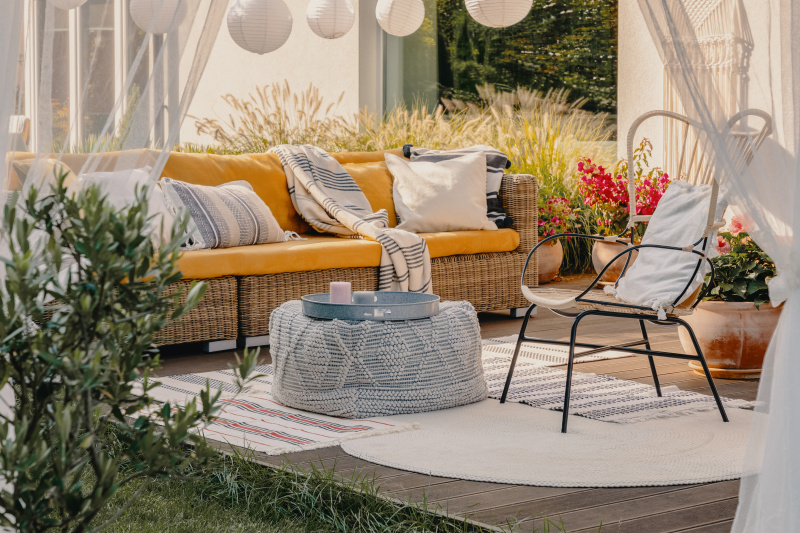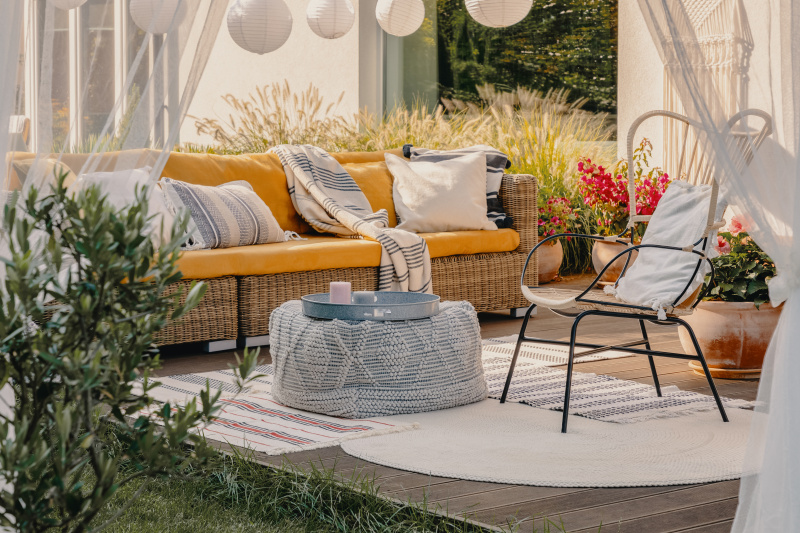
Your outdoor living space is one of the most important parts of the home. From breakfasts on the terrace to afternoons spent soaking up the sun to evenings under the stars, it’s the perfect spot to be any time of day. That’s why picking out the right furniture requires careful consideration to ensure your outdoor living area is stylish, functional and of course, comfortable for the entire family. Following are a few tips for a backyard gathering spot that checks all the boxes.
Choose the Location
The first decision you’ll have to make is picking out the ideal spot for your seating area. Depending on certain factors, like ground surface or exposure to the elements, you can determine what sort of materials and fabrics are best suited for this space.
Select Your Style
Before you go buying furniture, take the time to do research and find inspiration. If there’s a specific look or style that speaks to you, that can help to guide you and provide a sense of cohesion. For example, beige fabrics and wooden furniture will help contribute to a Mediterranean aesthetic, whereas high-end wicker and rattan can achieve a stylish and eco-friendly vibe that’s currently having a moment in the world of design.
Go With Quality
Regardless of what style you choose, it’s important that you invest in quality if you want furniture that’s comfortable and able to withstand the elements. It might be more expensive to go with materials that are resistant to harsh conditions, like rain and UV-fading, but in the long run, it will make your life much simpler.
Keep Storage in Mind
If you want to get the most out of your furniture, don’t forget that you’ll have to store it somewhere when the temperatures start to drop. While an outdoor sectional can be tempting, it might be a problem to find somewhere to put it at the end of the season. Moving your furniture into your garage or even a covered porch can go a long way toward protecting it when not in use.

.jpg)



